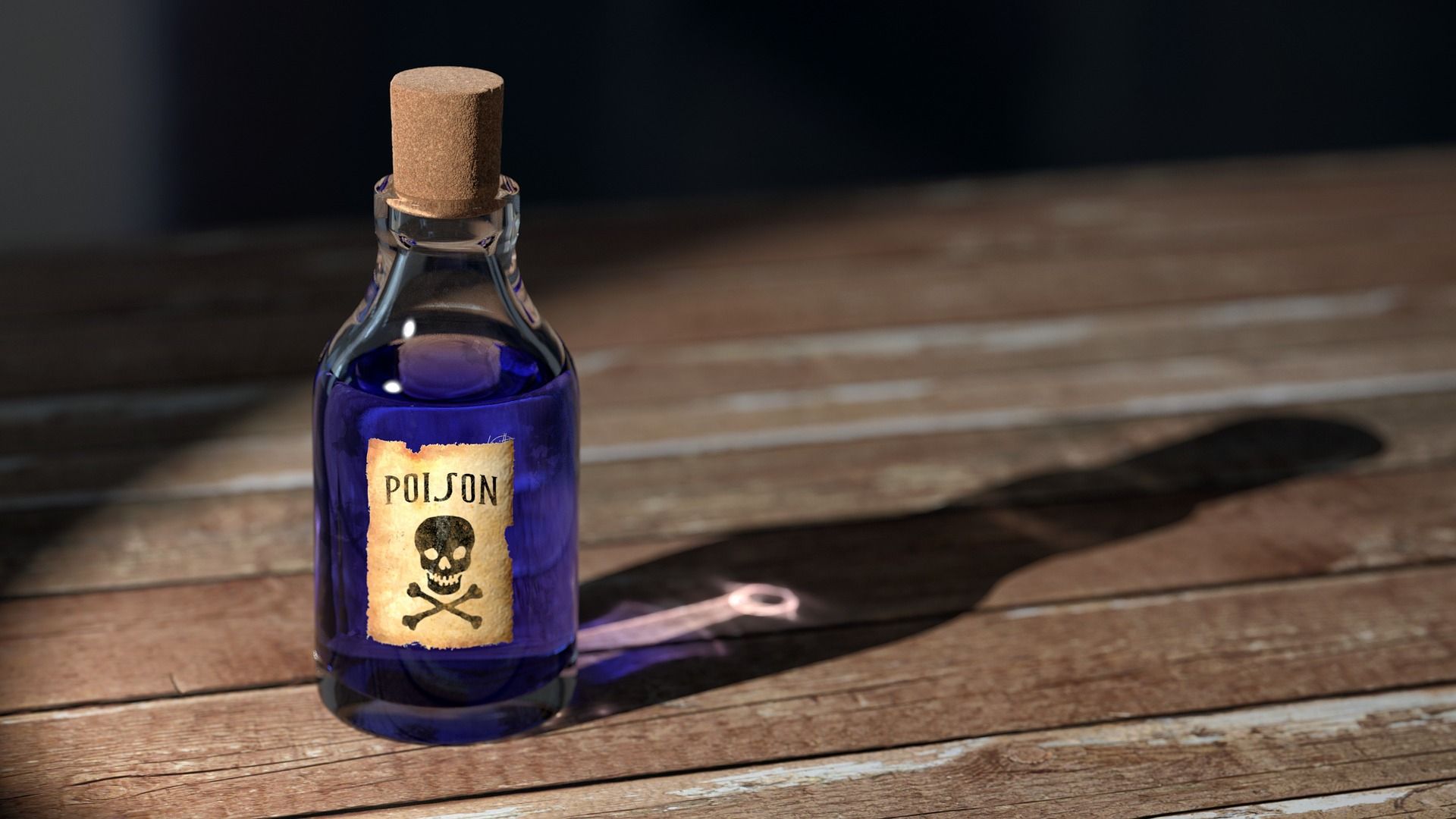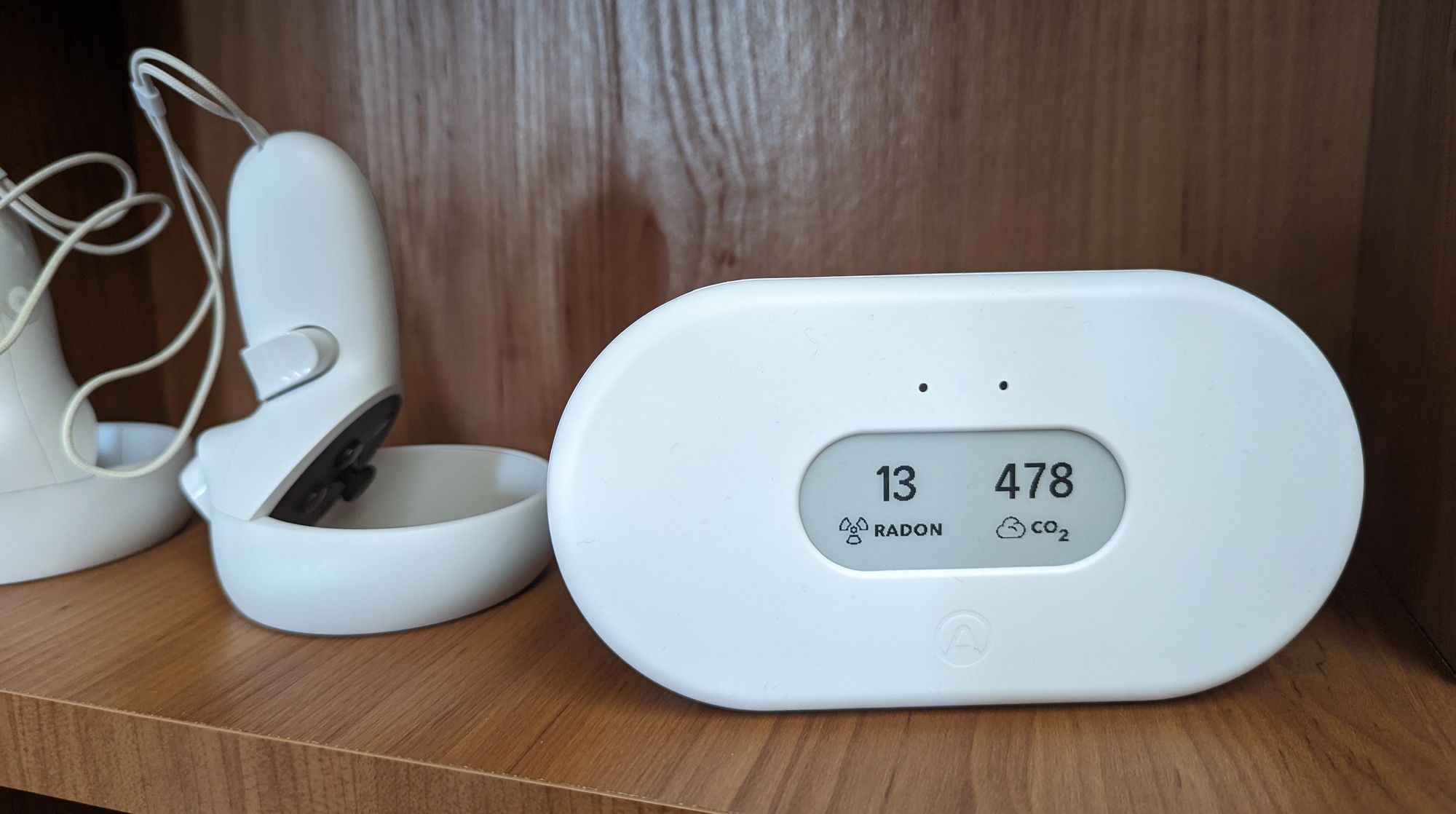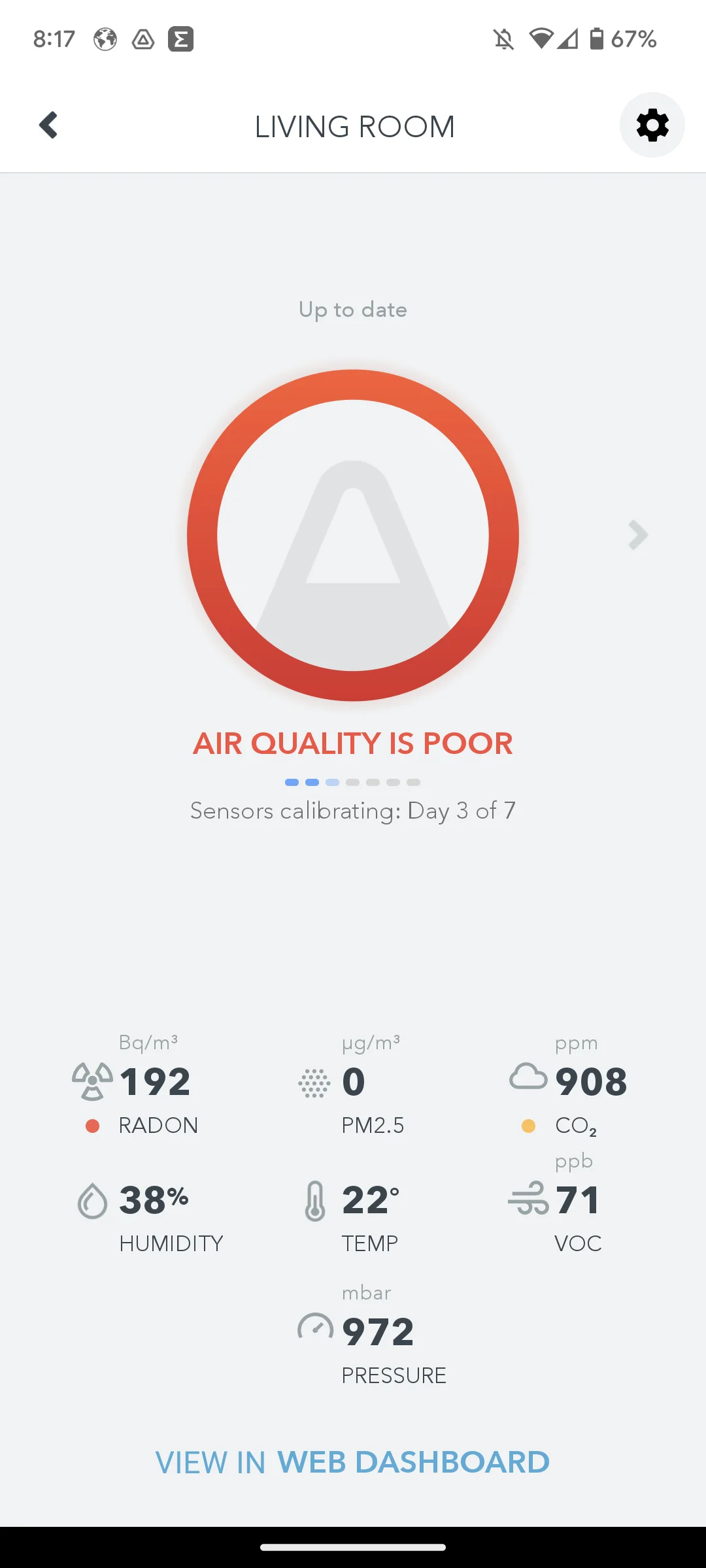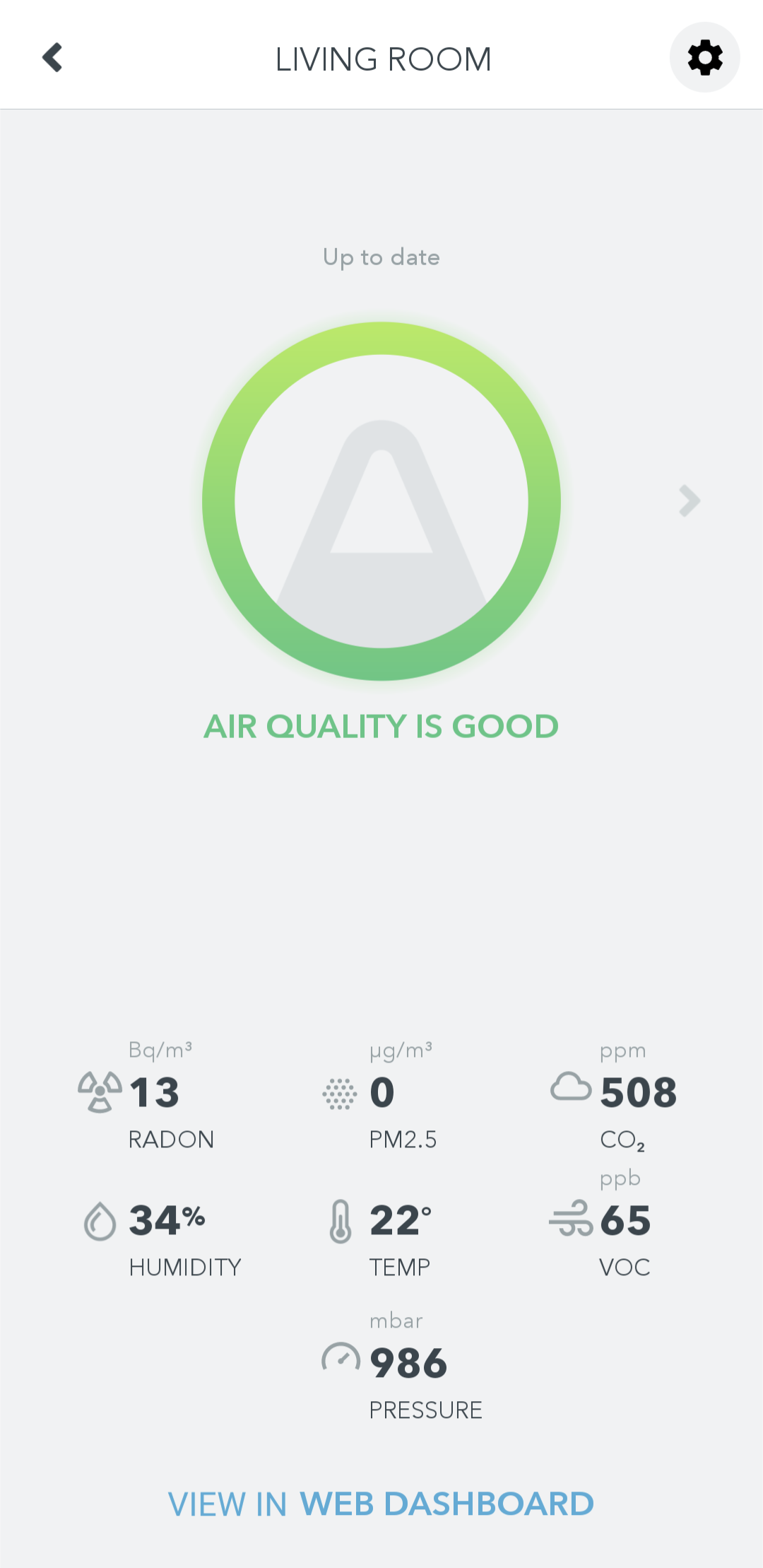Radon: A Slow-Moving Killer in Your Home

A few months ago, we received information from the Government about radon gas. You get these things from time to time; suggestions on insulating your home, or getting regular medical checkups, or making sure you're prepared for emergencies. While I can't remember why we took note of this particular message, this one was the beginning of an emotional roller coaster were weren't prepared for.
The information indicated that homeowners should check for radon because the gas is present, to varying degrees, in every Canadian home, and can pose serious health risks, including lung cancer. Really? The government information suggested that every home should perform a Radon test to find out what their levels are and whether remediation is in order, depending on the levels. What's remediation?
I needed more information. It was time to enter another Google search rabbit hole and the deeper I went, the worse I felt and the more panicked I became.
Radon gas is a naturally occurring radioactive gas that can be found in soil, rocks, and water. It is produced by the decay of uranium and other radioactive elements that are present in the earth's crust. Radon can enter homes and buildings through cracks in foundations, floor drains, and other openings. Not only that, but concrete is quite porous, as solid as it may look, so even if you don't have visible cracks, the gas can still seep in.
Oh, did I mention that radon gas is dangerous? It is a known human carcinogen and is the leading cause of lung cancer among non-smokers. Long-term exposure to radon gas can lead to an increased risk of lung cancer and other health problems. Not only the Government of Canada, but United States EPA, and the World Health Organization (WHO), all recommend that homes and buildings be tested for radon gas and that action be taken if levels are found to be high.
It is important to test for radon gas, especially in homes and buildings that are located in areas where the soil and rock contain higher levels of radioactive elements. Trouble is, it's hard to tell where those areas are. Radon movement in the soil can be hyperlocal. You can have dangerously high levels, but two blocks down the road, everything is peachy. There are simple tests that can be done to measure the levels of radon gas in a home or building, and if levels are found to be high, there are remediation techniques that can be used to reduce exposure.
There are lots of ways to test, from simple test kits you can buy from your local hardware store to fancy, and more expensive, electronic devices. The simple kits involve leaving the collector in a common area, letting it collect samples for a few months (typically 90 days) and sending it back to a centre for analysis. Those kits, while useful, aren't the best. They're also not reusable, so you can't check to see if any remediation you choose to do has the desired effect other than buying another kit and starting testing all over again.
Those of you who know me, know that I'm geekily inclined and that I love gadgets. Obviously, I was going to look into a technological solution, not this "send it away and cross your fingers" approach. I wanted my information right now. After much research into what Radon test systems are best, I opted for a smart sensor system from Airthings (considered by many to be the gold standard) which dutifully started collecting information on radon, particulate matter, CO2, VOCs, etc. Then, we started dutifully monitoring the companion app on our phones. For the techno-curious, the device I chose was the Airthings 2960 View Plus. I bought mine from Amazon (https://amzn.to/3GSXpEi) but you can also buy the same device from various hardware stores.

Many sites, including the one for the device I purchased, suggest you put the device in your living room, partly with the idea that this is where people spend most of their time. In fact, they tell you not to put it in the basement. That said, many of us are living at a time when many people are working in their basement (thanks, Covid), so take that how you will.
To make this long story a bit shorter, we weren't remotely happy with the radon levels we're seeing (see screenshot below). Our worst nightmares on this silent lung cancer monster were coming true. A reading of 192 is not that good. Numbers fluctuated and a day later, during the rain, the numbers were at 205Bq/m3, which, according to government guidelines, means we should be taking action. Right freaking now!

For the record, according to Health Canada, you should take action if your home tests above 200 Bq/m³ and about 7% of homes in Canada have radon levels above the Canadian guideline of 200Bq/m3. We Canadians tend to think that health guidelines here are typically tighter than those in the United States. Not so with radon. In the US, that "do something about it" number is 148Bq/m3. The WHO puts their number of concern at 100Bq/m3.
And it came to pass that I started looking for contractors who could install a Radon remediation system. I posted on Reddit, as well as my local Nextdoor site, and asked for suggestions. I searched for local contractors, checked reviews, and interviewed a couple.
We chose one of the contractors we talked to and 18 days later, our new system was to be put in place. While those 18 days passed, we kept checking our Airthings radon detector several times a day. Yes, we were obsessed. It's not fun to discover that you are living with something that is akin to smoking a pack of cigarettes every single day, and we don't smoke. Imagine how bad this would be for people who smoke as well. One of our neighbors died recently from lung cancer, and he wasn't particularly old although he was a smoker. Did radon accelerate his demise? We don't know. Our two cats, who spent most of their days in the basement, died after only four years. Was it radon?
The contractor arrived and did the work. He put an airtight seal on our sump pump, drilled holes to check for pressure beneath the basement slab, dug a six-inch circular hole in our laundry room floor, and installed a radon fan to pull the gas from beneath the concrete and redirect it outside (another hole).
All told, the entire process took about five hours. We thanked him for his work, and waited, watching our Airthings monitor for changes. Over the course of the next 36 hours, we watched the number plummet from well over two hundred to a wonderful 19!
This is what it looks like right now, as I write this.

We had been living with this silent killer for the last 15 years. The fact that we were unaware of the danger didn't make us feel any better. Worse.
Now, we rarely check the monitor. If we get warnings, it’s to let us know that the CO2 levels are a tad high, and we should open a window and let the house breathe a little (no, opening windows doesn’t help with radon). Neither of us was thrilled about spending money we weren't expensing to spend, but in the end, we considered it money well spent!
Links
Government of Canada on Radon
https://www.canada.ca/en/health-canada/services/health-risks-safety/radiation/radon.html
US EPA on Radon
https://www.epa.gov/radon
World Health Organization on Radon
https://www.who.int/news-room/fact-sheets/detail/radon-and-health
